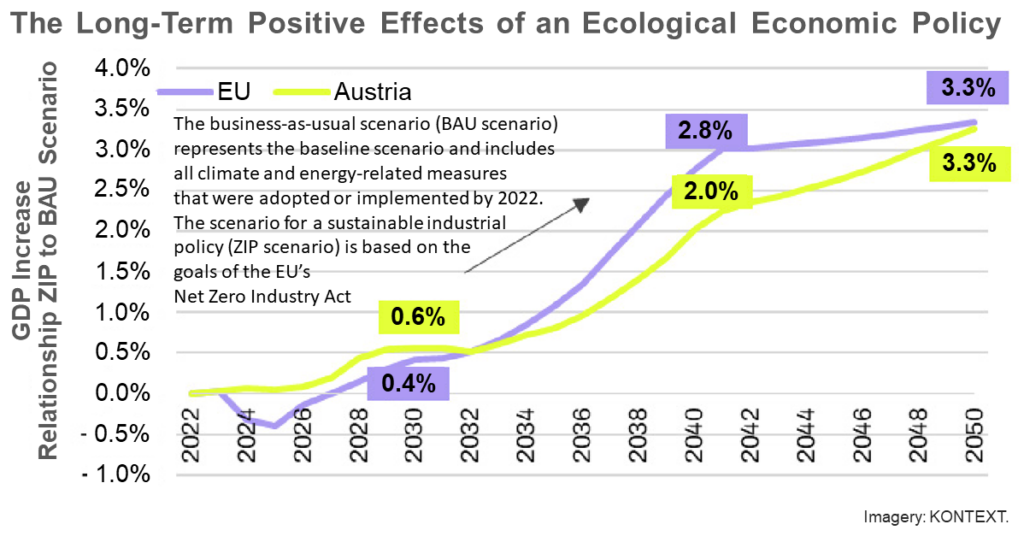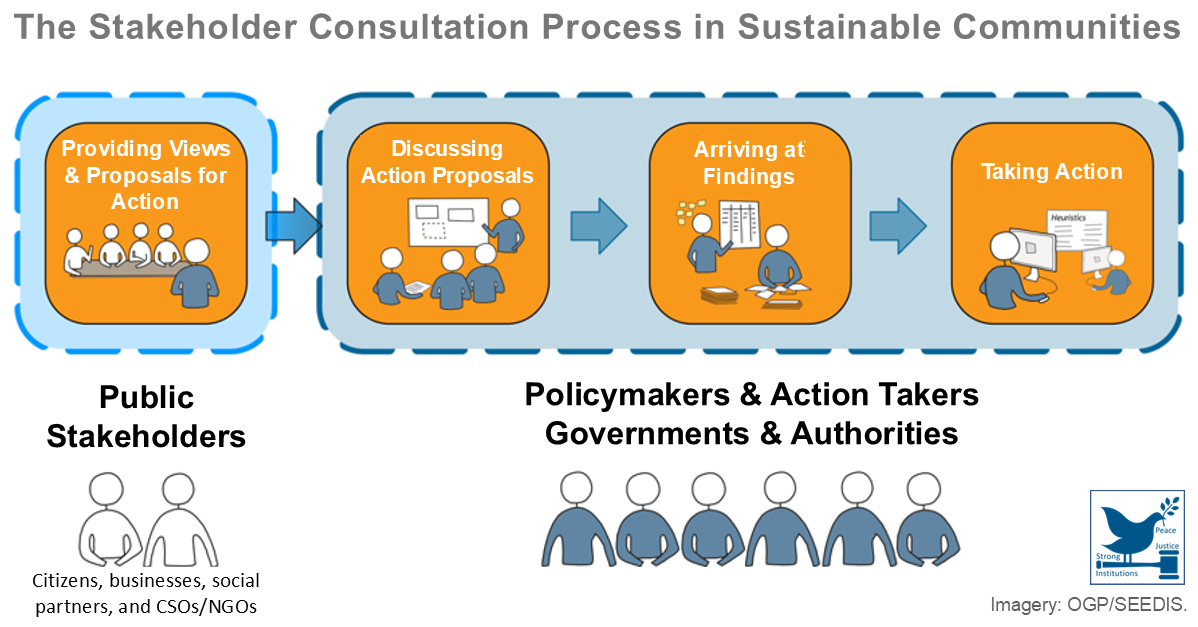Gregory Autin | February 17, 2025
A study, “Macroeconomic Impacts of Increased Decarbanisation and Green Industrial Policies in the European Union” by Cambridge Econometrics, models two scenarios for the period 2022 to 2050 and their impact on the economy and the labor market as well as on energy consumption/production, energy prices, and greenhouse gas emissions in the EU and Austria. The main objective of the study is to show the macroeconomic impact of certain industrial policy measures as well as carbon reduction and decarbonization measures within the European Union (EU).
Business-as-usual (BAU) is the baseline scenario and includes all climate and energy-related measures that were adopted or implemented by 2022. A “sustainable industrial policy” (ZIP) is a scenario based on the goals of the EU’s Net Zero Industry Act and includes additional measures for decarbonization, energy efficiency and increasing the European production of future technologies.
The study shows that economic output increases and the economy benefits as a result of an ecological economic policy. In 2050, the gross domestic product (GDP) in the ZIP scenario is 3.3% higher than in the BAU baseline scenario.
The highest growth is recorded in the technical sector, such as the electrical, electronics, and automotive industries or mechanical engineering, with around EUR 928 billion in 2050. Except for the oil, gas, and coal industries, almost all sectors benefit from spillover effects and achieve higher economic output in the ZIP scenario.
By strengthening domestic production, a sustainable industrial policy makes the EU significantly less dependent on imports of technologies and energy. Imports are reduced by 2,750 billion euros in the technical sector and by 956 billion euros across all sectors.
Sustainable industrial policy also creates jobs. In the ZIP scenario, 2.5 million jobs will be created by 2050 compared to the BAU baseline scenario, 44,000 in Austria, the majority of which are in the service sector and technical production.
The greening of the economy also leads to lower energy prices. The increased use of renewable energies and more efficient technologies will halve energy conversion losses in the ZIP scenario – 29% less primary energy consumption and 16% lower electricity prices by 2050.


